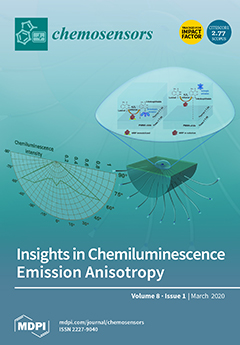This research includes the design and synthesis of new derivatives for rhodanine azo compounds (
4a–c) containing a naphthalene ring. Physiochemical properties of the synthesized compounds were determined by their melting points, FTIR,
1H-NMR,
13C-NMR, and elemental analysis
[...] Read more.
This research includes the design and synthesis of new derivatives for rhodanine azo compounds (
4a–c) containing a naphthalene ring. Physiochemical properties of the synthesized compounds were determined by their melting points, FTIR,
1H-NMR,
13C-NMR, and elemental analysis spectroscopic techniques. The biological activities of the newly prepared azo rhodanine compounds were evaluated against some pathogenic bacteria using three different bacterial species including (
Escherichia coli.,
Pseudomonas aeruginosa,
Staphylococcus aureus) and compared with amoxicillin as a reference drug. The results showed that our compounds have moderate-to-good vital activity against the mentioned pathogenic bacteria. The selectivity and sensitivity of the newly prepared rhodanine azo compounds with transition metals Co
2+, Cu
2+, Zn
2+, Ni
2+, and Fe
3+ were studied using UV–vis and fluorescence spectroscopy techniques. Among the synthesized azos, azo
4c showed affinity toward Fe
3+ ions with an association constant of 4.63 × 10
8 M
−1. Furthermore, this azo showed high sensitivity toward Fe
3+ ions with detection limits of 5.14 µM. The molar ratio and Benesi–Hildebrand methods confirmed the formation of complexes between azo
4c and Fe
3+ with 1:2 binding stoichiometry. Therefore, azo
4c showed excellent potential for developing efficient Fe
3+ chemosensors.
Full article





